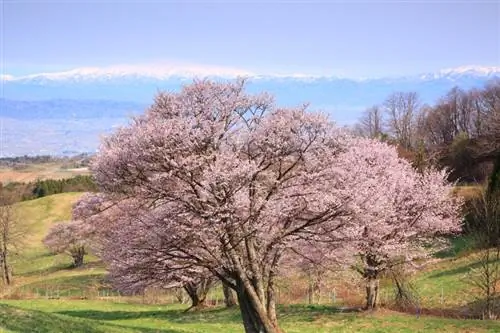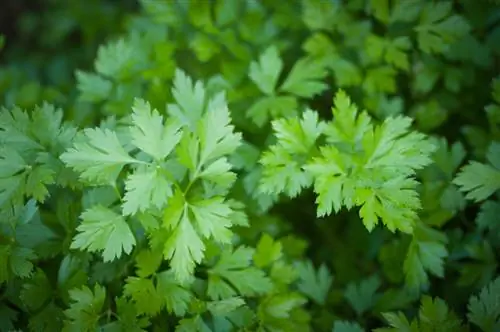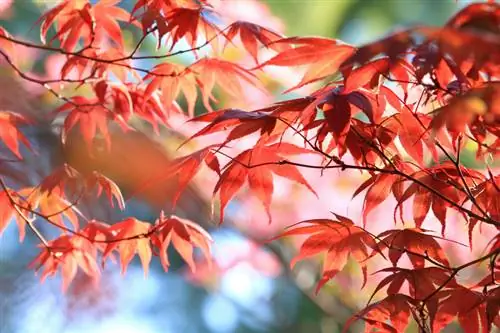- Author admin [email protected].
- Public 2023-12-16 16:46.
- Last modified 2025-01-23 11:20.
It can be a true flowering miracle. But if it doesn't receive any care for years and vegetates away, its flowering diminishes and it doesn't look very attractive. What is necessary to keep the Japanese cherry tree he althy and happy?

How do you care for a Japanese cherry?
To keep the Japanese cherry tree he althy, it should be watered regularly, fertilized occasionally and thinned out after flowering. Good drainage and removing diseased plant parts are also important.
How do you water the plant correctly?
The Japanese ornamental cherry does not like drought or waterlogging. Wet soil promotes, among other things, diseases and soil that is too dry, for example, causes flowers to fall off prematurely. Ideally, the underlying substrate is evenly moist.
More information:
- calcine-free and calcareous water is tolerated
- A layer of mulch prevents the soil from drying out too quickly
- make sure there is good drainage
- only water when the top layer of soil has dried out
- water over several days, not liters in one day
Does adding fertilizer make sense?
If the Japanese cherry was planted in a nutrient-rich substrate, fertilizer is not necessarily necessary. Before and during flowering, it can be supplied with phosphorus to stimulate flower formation. But as a rule, German soils are extremely rich in phosphorus. On top of that, a dose of lime every two to three years is worth it.
How is the plant cut?
The Japanese ornamental cherry is thinned out immediately after its flowering period. The branches are removed right down to the base. Further cutting should be avoided. This plant should not be cut, especially in autumn, as the risk of frost damage is then too great.
Is it necessary to take action against diseases and pests?
Usually the Japanese cherry is robust and resistant to diseases and pests. But under unfavorable location conditions and with bad luck it is attacked by the frost moth. It eats the leaves bare and can be attacked on the trunk using glue traps (€19.00 on Amazon). Furthermore, Monilia tip drought and shotgun disease sometimes occur. In both cases, the affected parts should be removed.
Tips & Tricks
When combating diseases and pests, the use of fungicides, pesticides, etc. is not recommended. The plant itself and the environment will thank you.






